Selecting the best tech stack is among the most important choices a enterprise chief could make. Your expertise decisions will impression every part from growth velocity and scalability to consumer expertise and long-term upkeep prices. But, with so many choices obtainable, making the fitting alternative may be daunting.
What’s a Tech Stack and Why is Selecting the Proper One So Vital?
A tech stack, also called a software program growth stack, refers back to the mixture of programming languages, frameworks, libraries, and instruments used to construct and run an software. It usually consists of two main parts:
- Frontend (Shopper-side): This consists of every part the consumer interacts with, comparable to HTML, CSS, and JavaScript frameworks like React or Angular.
- Backend (Server-side): This powers the applying behind the scenes, together with servers, databases, and APIs. Fashionable backend applied sciences embody Node.js, Django, and Ruby on Rails.
Selecting the best tech stack is essential as a result of it determines your software’s efficiency, scalability, growth velocity, and upkeep prices. Making the flawed alternative can result in technical debt, pricey migrations, and efficiency bottlenecks. Conversely, deciding on the optimum tech stack for enterprise wants ensures a strong basis for progress and effectivity.
Elements to Take into account When Selecting a Tech Stack
When evaluating how to decide on the fitting tech stack, it’s important to weigh a number of essential elements.
1. Enterprise Targets and Necessities
Your tech stack ought to align along with your product’s goal, scalability wants, and efficiency expectations. Totally different targets require completely different applied sciences.
- Scalability: Select a stack that may deal with rising site visitors and evolving functionalities. For instance, Node.js is understood for its excessive scalability, making it a superb alternative for real-time purposes.
- Efficiency: If velocity and responsiveness are essential, think about applied sciences that assist asynchronous processing, like Node.js or Django.
- Person Expertise: For dynamic and interactive UI, React or Angular are sturdy choices for frontend growth.

2. Funds and Prices
The associated fee-effectiveness of a tech stack goes past the preliminary setup. It’s essential to think about long-term bills, together with upkeep, scalability, and developer salaries.
- Open-Supply vs. Proprietary: Open-source options like LAMP (Linux, Apache, MySQL, PHP) are free however could require extra upkeep, whereas proprietary options, comparable to Microsoft’s .NET, include licensing prices however usually provide extra assist.
- Improvement Pace: Speedy growth frameworks like Django or Ruby on Rails could scale back time-to-market, saving labor prices.
3. Crew Experience and Expertise
Your crew’s talent set is a decisive think about selecting a tech stack. Choosing a stack that aligns along with your crew’s experience minimizes the training curve and accelerates growth.
- Make the most of Present Abilities: In case your crew is proficient in JavaScript, choosing the MEAN/MERN stack (MongoDB, Specific.js, Angular/React, Node.js) could be a strategic alternative.
- Studying Curve: If new expertise is required, assess the training curve and the supply of coaching sources. The broader the group and documentation, the better it’s to study.
4. Scalability and Efficiency
A scalable tech stack permits your small business to develop effectively, guaranteeing that your software can deal with elevated site visitors, information quantity, and performance.
- Horizontal vs. Vertical Scaling: Node.js and cloud-based stacks are perfect for horizontal scaling, whereas monolithic architectures like LAMP are higher fitted to vertical scaling.
- Efficiency Optimization: Select applied sciences recognized for top efficiency beneath heavy hundreds, comparable to utilizing Node.js for real-time purposes or Django for data-heavy net purposes.
5. Safety
Safety ought to by no means be an afterthought. Guarantee your tech stack consists of sturdy safety features to guard delicate information and techniques.
- Constructed-in Safety Options: Frameworks like Django include built-in safety towards frequent vulnerabilities like SQL injection and cross-site scripting (XSS).
- Compliance Necessities: If your small business must adjust to business rules (e.g., HIPAA or GDPR), select stacks that assist these requirements.
6. Group Assist and Documentation
A well-supported expertise stack makes it simpler to search out options, rent builders, and keep long-term stability.
- Lively Group: Go for applied sciences with a big and lively group. This ensures frequent updates, safety patches, and third-party integrations.
- Complete Documentation: Test for well-maintained documentation that may information your crew via growth hurdles.

Fashionable Tech Stacks for Companies
Selecting the most effective tech stack for startups and different SMBs usually includes evaluating fashionable stacks. Right here’s an summary of essentially the most extensively used ones:
| Stack | Parts | Use Circumstances | Professionals | Cons |
| MEAN/MERN | MongoDB, Specific.js, Angular/React, Node.js | Single-page purposes, real-time collaboration instruments, and scalable net purposes. | Full-stack JavaScript resolution, fast growth, and excessive scalability. | Efficiency may be compromised beneath heavy computation duties. |
| LAMP | Linux, Apache, MySQL, PHP | Small to medium-sized net purposes, blogs, and e-commerce web sites. | Value-effective, well-documented, and secure. | Restricted scalability in comparison with trendy cloud-native stacks. |
| Serverless Stacks | AWS Lambda, Google Cloud Capabilities, Azure Capabilities | Occasion-driven purposes, microservices, and purposes with variable workloads. | Lowered infrastructure administration and cost-efficiency. | Vendor lock-in and potential latency points. |
| Python-Primarily based Stacks | Django, Flask | Information-driven purposes, scientific computing, and fast prototyping. | Excessive scalability, safety, and fast growth. | Not as quick as Node.js in asynchronous duties. |
When to Use a Customized Tech Stack
A customized tech stack is right for distinctive enterprise wants, extremely specialised purposes, or performance-critical techniques. Nevertheless, it calls for extra sources for growth, testing, and upkeep. Use customized stacks when
off-the-shelf options don’t meet your necessities, you must combine complicated legacy techniques, and/or safety or compliance calls for customized configurations.
Case Research and Examples: Actual-World Success with Tech Stacks
Selecting the best tech stack isn’t just about deciding on the most recent or hottest applied sciences—it’s about making strategic choices that align with your small business targets, price range, and scalability wants. For instance how efficient tech stack choices can drive progress and effectivity, let’s discover some real-world examples of small and medium-sized companies (SMBs) that made strategic decisions of their expertise stacks.
1. Black Mountain Ski Resort: Customized Expertise for Operational Effectivity
Black Mountain Ski Resort modernized its operations by partnering with Entabeni Programs to develop a customized tech stack tailor-made to their wants, enhancing operational effectivity and competitiveness.
Tech Stack Parts:
- Customized {Hardware} Integration: Optimized snowmaking processes.
- Customized Software program Options: Streamlined ticketing, gross sales, and buyer engagement.
- Information Analytics: Improved useful resource allocation and strategic planning.
Outcomes:
- Lowered prices and environmental impression.
- Enhanced buyer experiences and repair administration.
- Aggressive benefit via data-driven methods.
Learn Extra: Can Tech Save Small Ski Resorts? – Wired
2. 3 Males Movers: AI-Powered Security and Effectivity
3 Males Movers adopted AI-driven applied sciences to reinforce security and operational effectivity, decreasing accidents and optimizing supply routes.
Tech Stack Parts:
- AI-Enabled Security Programs: Monitored driver conduct to scale back distractions.
- Superior Routing Expertise: Optimized supply routes, enhancing security and gasoline effectivity.
- Actual-Time Information Analytics: Supplied actionable insights on driver efficiency and route effectivity.
Outcomes:
- 4.5% discount in accidents inside three months.
- Enhanced security measures lowered legal responsibility and improved accuracy.
- Optimized routing elevated effectivity and value financial savings.
Learn Extra: Texas-Primarily based Transferring Firm Makes use of AI – Enterprise Insider
3. Web Buddies: Superior Safety with Subsequent-Gen Firewalls
Web Buddies enhanced cybersecurity for its SMB shoppers by partnering with Palo Alto Networks, leveraging superior firewalls and AI-powered risk intelligence.
Tech Stack Parts:
- Subsequent-Era Firewalls: Protected delicate information and techniques.
- Menace Intelligence: AI-driven risk detection for proactive safety.
- Cloud Safety Integration: Supported distant work and information safety.
Outcomes:
- Improved community safety and lowered breach dangers.
- Proactive risk administration enhanced buyer belief.
- Strengthened shopper retention with high-level safety options.
Learn Extra: How We Constructed Our Expertise Stack – Web Buddies
These circumstances showcase how aligning tech stack determination elements with enterprise targets can lead to vital operational enhancements.

Frequent Pitfalls to Keep away from When Selecting a Tech Stack
Selecting the best tech stack is about choosing the right or most progressive applied sciences and avoiding the frequent errors that may hinder growth effectivity, scalability, and general enterprise success.
1. Following Traits Blindly
Selecting a tech stack primarily based solely on reputation can result in misalignment with your small business wants. What’s stylish at present could not assist your particular necessities or long-term targets.
Why It’s a Downside:
- Misalignment: Fashionable applied sciences could not align along with your product’s targets.
- Elevated Prices: Excessive demand for stylish expertise usually means increased salaries and upkeep bills.
- Obsolescence Danger: Traits change shortly, resulting in outdated techniques and technical debt.
Answer:
- Prioritize your small business necessities and scalability over traits.
- Consider every expertise’s performance, efficiency, and long-term viability.
- Use instruments like StackShare and Codementor for real-world insights.
2. Overcomplicating the Stack
Incorporating too many applied sciences or overly complicated options will increase upkeep prices and complicates growth.
Why It’s a Downside:
- Upkeep Complexity: Extra instruments imply extra dependencies and potential conflicts.
- Studying Curve: Advanced architectures decelerate productiveness and improve onboarding time.
- Efficiency Points: Over-engineering can introduce efficiency bottlenecks.
Answer:
- Preserve it easy. Select solely the applied sciences important to your small business targets.
- Keep away from pointless dependencies until they supply vital worth.
- Construct a easy model first, after which enhance it as you get suggestions.

3. Ignoring Crew Abilities and Experience
Selecting applied sciences your crew isn’t accustomed to slows productiveness and reduces code high quality.
Why It’s a Downside:
- Low Productiveness: Steep studying curves delay growth timelines.
- Poor Code High quality: Inexperienced builders could produce suboptimal code, growing technical debt.
- Larger Prices: Extra coaching or hiring exterior specialists may be costly.
Answer:
- Leverage your crew’s present expertise for quicker growth and higher productiveness.
- If adopting new tech, present sufficient coaching and assist.
- When in-house expertise are inadequate, think about hiring skilled builders or partnering with specialised businesses.
4. Neglecting Safety Issues
Overlooking safety features can result in information breaches, compliance points, and reputational harm.
Why It’s a Downside:
- Information Breaches: Insufficient safety measures expose delicate information to cyber threats.
- Compliance Dangers: Non-compliance with rules (e.g., GDPR, HIPAA) results in authorized liabilities.
- Repute Injury: Safety breaches erode buyer belief and impression model loyalty.
Answer:
- Select applied sciences with robust built-in safety features and common updates.
- Guarantee compliance with related business requirements and rules.
- Implement finest practices comparable to information encryption, safe authentication, and common safety audits.
5. Underestimating Scalability Wants
Failing to decide on a scalable tech stack results in efficiency points, downtime, and dear migrations.
Why It’s a Downside:
- Efficiency Bottlenecks: Restricted scalability can’t deal with elevated consumer demand.
- Pricey Migrations: Switching to a extra scalable resolution later is pricey and complicated.
- Person Churn: Downtime and poor efficiency end in a adverse consumer expertise.
Answer:
- Choose scalable applied sciences like cloud-native options (AWS, Google Cloud, Azure) or Node.js for real-time purposes.
- Plan for each horizontal and vertical scaling from the beginning.
- Take into account serverless architectures for environment friendly workload administration.
6. Failing to Take into account Lengthy-Time period Upkeep and Assist
Selecting a tech stack with out contemplating long-term upkeep results in technical debt and elevated prices.
Why It’s a Downside:
- Out of date Applied sciences: Outdated or area of interest techs are onerous to keep up and assist.
- Excessive Upkeep Prices: Poor documentation or restricted group assist will increase prices.
- Compatibility Points: Failing to replace dependencies results in safety and compatibility issues.
Answer:
- Select applied sciences with lively group assist, complete documentation, and common updates.
- Plan for long-term upkeep by guaranteeing compatibility and future-proofing the structure.
- Contain builders in decision-making to grasp the implications of upkeep and assist.

Methods to Check Your Tech Stack
Testing your tech stack is a essential step to make sure that your chosen applied sciences can assist your software’s performance, scalability, and efficiency necessities. To successfully validate your stack, think about implementing a structured, multi-faceted testing technique.
1. Begin with Prototyping
Prototyping is the primary and most cost-effective step in testing your tech stack. It includes creating a light-weight model of your software to judge key functionalities and general efficiency.
Targets:
- Validate core options and functionalities.
- Assess consumer expertise and interface circulation.
- Determine early integration challenges between completely different tech parts.
Finest Practices:
- Construct a Minimal Viable Product (MVP) that features solely the important options. This retains growth time and value low whereas offering significant suggestions.
- Check the prototype with actual customers to collect suggestions on usability, efficiency, and general expertise.
- Measure efficiency metrics like loading time, responsiveness, and useful resource utilization to gauge effectivity.
2. Conduct A/B Testing for Comparative Evaluation
A/B testing lets you instantly examine their efficiency of two completely different variations beneath an identical situations. This method helps you make data-driven choices by quantifying the impression of every stack on key efficiency metrics.
Targets:
- Examine efficiency metrics comparable to load occasions, useful resource consumption, and error charges.
- Measure scalability and stability beneath completely different site visitors situations.
- Consider consumer expertise by analyzing behavioral metrics like session period and bounce charges.
Finest Practices:
- Select efficiency indicators that align with your small business targets, comparable to velocity, scalability, or useful resource effectivity.
- Check every model with an analogous viewers phase to keep up consistency and reliability within the outcomes.
- Use cloud-based testing instruments like AWS System Farm or Google Cloud Check Lab for correct and scalable A/B testing.
3. Implement Efficiency Stress Testing
Efficiency stress testing evaluates how your tech stack performs beneath excessive situations, comparable to excessive site visitors volumes, information processing hundreds, or complicated transactions. That is significantly essential for purposes anticipated to expertise fast progress or seasonal spikes in utilization.
Key Inquiries to Tackle:
- Can the tech stack deal with peak site visitors with out compromising efficiency?
- The place are the bottlenecks beneath most load situations?
- How resilient is the system to surprising failures or site visitors surges?
Finest Practices:
- Use cloud-based load testing instruments like Apache JMeter, Gatling, or LoadRunner to simulate excessive site visitors situations.
- Concentrate on metrics like response time, server load, reminiscence utilization, and error charges.
- Embody failover testing to make sure the system maintains performance throughout failures or crashes.

4. Confirm Integration and Compatibility
Integration testing ensures that each one parts of your tech stack—frontend, backend, databases, and third-party APIs—work seamlessly collectively
Why It’s Important:
- Confirms that completely different applied sciences within the stack talk successfully.
- Validates information integrity and consistency throughout frontend and backend techniques.
- Ensures compatibility with third-party integrations comparable to cost gateways, CRM techniques, or analytics instruments.
Finest Practices:
- Use automated testing instruments like Selenium or Cypress for frontend testing and Postman for API testing.
- Conduct cross-browser and cross-platform testing to make sure a constant consumer expertise.
- Recurrently replace dependencies and examine for compatibility points.
5. Leverage Person Testing and Suggestions
Person testing goes past technical validation by gathering real-world suggestions on consumer expertise, usability, and general satisfaction.
Key Targets:
- Validate consumer expertise and interplay circulation.
- Determine usability challenges or ache factors.
- Collect suggestions on efficiency, responsiveness, and general satisfaction.
Finest Practices:
- Use instruments like UserTesting or Hotjar to watch actual consumer interactions and collect suggestions.
- Conduct usability checks with various consumer teams to seize a variety of suggestions.
- Iterate primarily based on consumer suggestions to reinforce options, navigation, and efficiency.
Testing validates your complete structure’s effectiveness and ensures that it aligns with your small business targets. A strategic, multi-faceted testing method also can mitigate dangers, optimize efficiency, and construct a strong, scalable, and high-performing software.
Prepared to decide on the fitting tech stack? Observe our step-by-step information to make an knowledgeable determination that helps your small business targets!
FAQ:

What’s a very powerful issue to think about when selecting a tech stack for a startup?
Scalability and efficiency to assist future progress.
Can a tech stack be modified after it’s been chosen, and what challenges does that convey?
Sure, however it may be pricey and time-consuming attributable to code refactoring and compatibility points.
How do I resolve between utilizing open-source vs. proprietary applied sciences?
Consider price, group assist, safety, and your crew’s familiarity.
What are the dangers of selecting a tech stack that isn’t extensively used?
Restricted assist, fewer integrations, and challenges in hiring expert builders.
How can I decide if my crew has the talents to make use of a specific tech stack?
Conduct talent assessments and pilot tasks to judge proficiency.

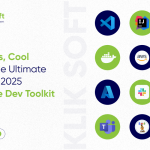

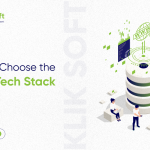



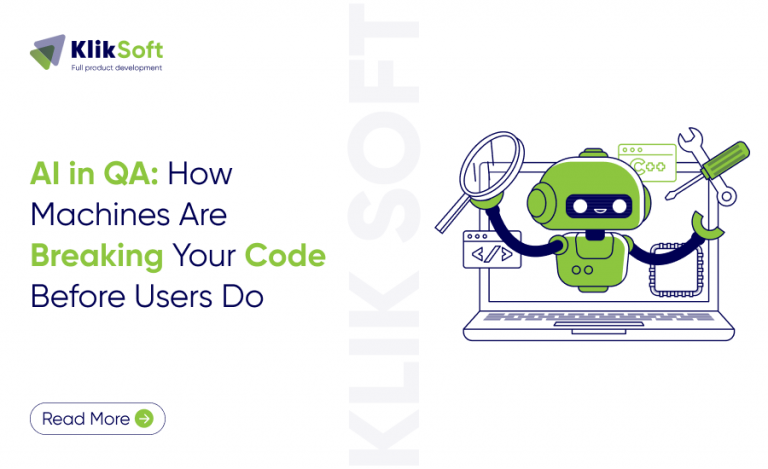
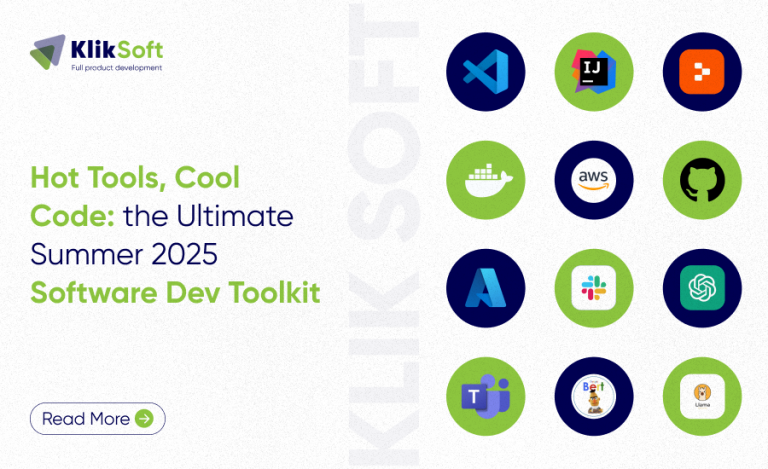
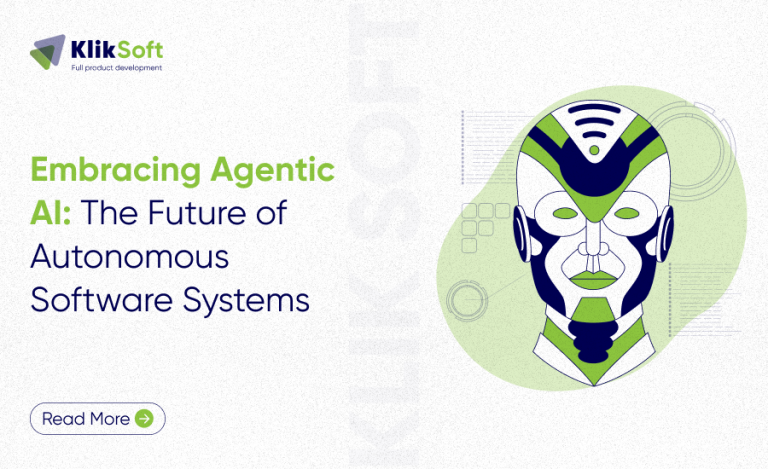

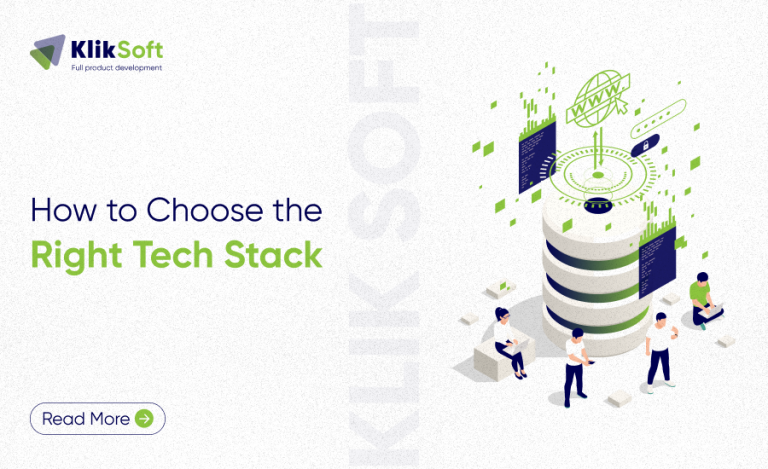

+ There are no comments
Add yours